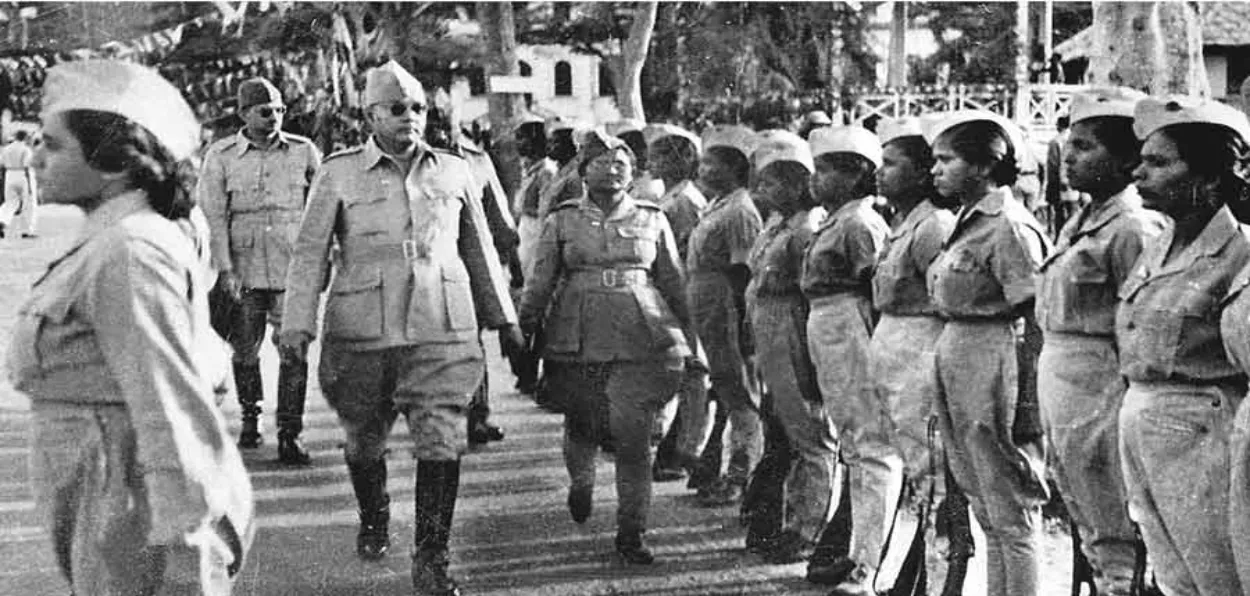
Saquib Salim
“Spies Landed By Parachute in India: Three Indians Executed: Two Madrasis Also Pay Extreme Penalty” This was the headline of a newspaper report published on 27 August 1944.
Speaking of the Azad Hind Fauj, or the Indian National Army (INA), we often limit our discussion to Subhas Chandra Bose and the court trials of its officers. The INA was a developed army and thousands of its soldiers laid down their lives on the battlefield. Another unknown fact is the roles of its spies who are not even mentioned in the book on INA.
Unsung Heroes of Freedom Struggle
To deal with the situation the British Imperial Government in India passed the Enemy Agents’ Ordinance in 1943. The Indian Express reported in August 1944, “In October 1943, the execution was announced of four enemy agents, who were members of a party landed by a Japanese submarine on the west coast of India, says a communique. Since then two more spies, who were connected with this party but who had entered India by a different route, have paid the extreme penalty after trial under the Enemy Agents' Ordinance. These were T. P. Kumaran Nair of Malabar and Ramu Thevar of the Ramnad district in Madras, both of whom were living in Malaya at the outbreak of hostilities with Japan.
“Another case under the Enemy Agents' Ordinare has also been recently concluded, in which persons were sentenced to death. They were members of a party who had been landed by parachute in India with money and equipment, including wireless transmission sets.
“These five persons were Ajaib Singh of the Amritsar district, Zahur Ahmed of the Sheikhupura district in the Punjab, S. L. Mazumdar of the Chittagong district in Bengal, Audeshwar Rai and Sham Lal Pande of the Gorakhpur district in the United Provinces. Their convictions and sentences were confirmed by the judge of the High Court who reviewed the cases, but the death sentences passed on the two last mentioned persons have been commuted to transportation for life.”
After the interim government under Jawaharlal Nehru took charge, in the Legislative Assembly Satyapriya Banerjee asked Home Minister Sardar Vallabhbhai Patel how many Indians were executed for being spies of INA. Patel told the assembly that thirteen Indians were executed for spying in India.
These 13 Indians were: Vava Kunhu Ahmad Abdul Kadir of Vakkom, Travancore, Satyendra Chandra Bardhan of Tippera, Bengal, Fauja Singh of Amritsar, Punjab, Parasubhavan Thaikat Abhijanand of Trivandrum, T. P. Kumaran Nair of Calicut Taluq, Madras, Ramu Thevar of Ramanand, Madras, Ajaib Singh of Amritsar, Punjab, Zahur Ahmad of Sheikhupura, Punjab, S. L. Mazumdar of Chittagong, Bengal, Nandu Kandi Kanaran of Kurumbaranad, Tulasi Ramaswami of Singapore, Ratnam Pillai of Pattukottai Taluq, and Sethu Krishna of Parmakudi Taluk,
Sardar Patel told the assembly that 13 more Indians had been convicted but weren't awarded death sentences. They were - Boniface Perwira, Sham Lal Pande, Audeshwar Rai Pande, Sohan Singh, Ganga Singh, Sadhu Singh, Sukhchain Nath Chopra, Ram Dulare Dube, Bhagwat Upadhyay, Kartar Singh, Kanwal Singh, Pabitra Mohan Roy and Amrik Singh Gill.
Of them, four were still languishing in jails when the question was answered.
The British authorities declared an award of Rs 5,000 or helping in arresting any spy in India. It was also decided that the convictions and executions of these INA men should be publicized widely to terrify people.
In a letter to the different departments and princely states the British Government asked to give wide publicity to these trials. The letter stated, “The deterrent effect to be obtained by the publicity given to successful prosecutions under the Ordinance is one of the objects with which we are conducting those trials and the policy to be followed in this publicity has recently been under consideration.
“3. Our main objectives, at the present stage, must be (a) to make enemy agents give themselves up at the earliest opportunity; and (b) to ensure that in doing so they give true and full statements.
“For this purpose, it is important to stress the following points - (1) Persons who work for the enemy will be punished with the full rigour of the law.”
Some spies could never be caught. Like, British intelligence had alerted police and other agencies in India to find R. A. Hamid, an officer of the INA who had entered India from Burma in February 1944.
ALSO READ: Capt Mohammad Akram was one of the first martyrs of INA
Like the combat force of the INA, these spies were also representative of a united India. We see Muslims, Hindus, Sikhs, and Christians among them. People from Punjab to Kerala were executed for being patriots.
